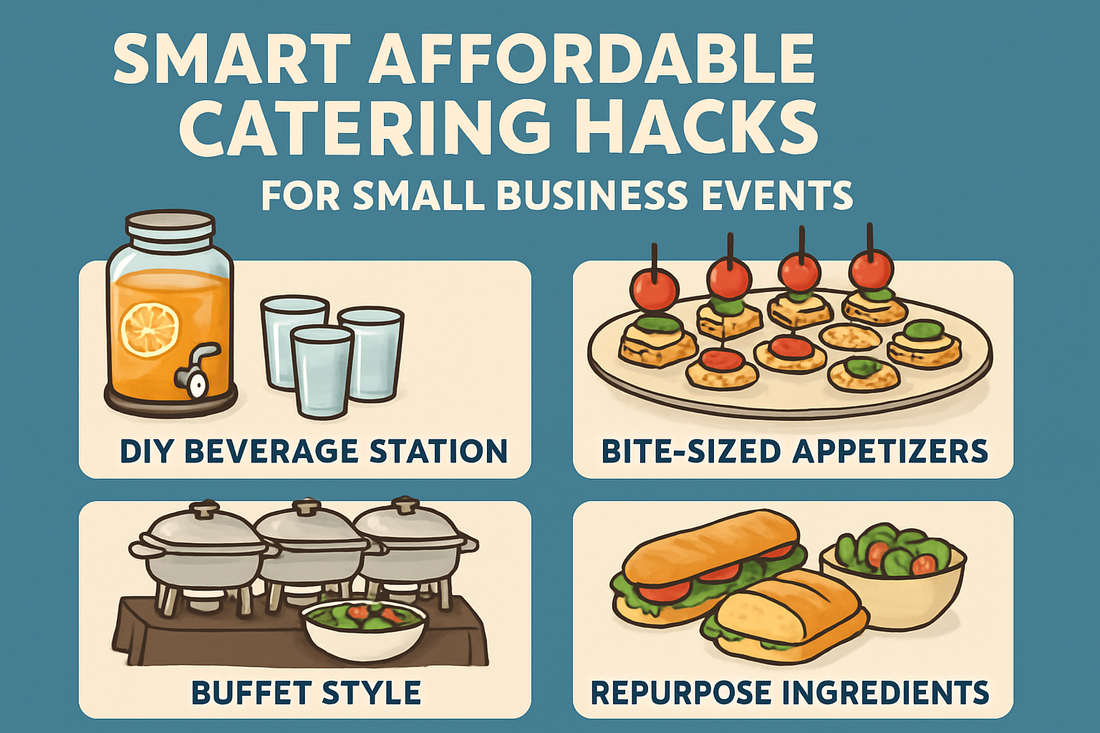
Smart Affordable Catering Hacks for Small Business Events
Share
Understanding Your Catering Budget Parameters
Small business events demand strategic financial planning, especially when it comes to nourishment provisions. Establishing realistic budgetary constraints helps eliminate overspending while ensuring your attendees experience memorable culinary moments. Most successful small business gatherings allocate approximately 20-30% of their total event budget toward food services.
Consider your guest count, dietary preferences, and event duration when determining expenditure thresholds. A focused approach prevents last-minute splurges on unnecessary additions that inflate costs without enhancing the overall experience.
Cost-Effective Menu Planning Strategies
Embrace Family-Style Service Models
Family-style presentations dramatically reduce per-person costs while fostering collaborative dining experiences. Large communal platters encourage networking and conversation among colleagues. This approach particularly shines with shareable cuisines like Cajun seafood boils, where the interactive nature of the meal becomes part of the entertainment.
Seafood boils exemplify this concept perfectly—guests gather around communal spreads, cracking shells and sharing stories. The mess-free preparation allows hosts to focus on relationship-building rather than intricate service logistics.
Strategic Timing Considerations
Event scheduling significantly impacts catering expenses. Mid-afternoon gatherings often cost less than prime dinner hours, while weekday events typically offer better pricing than weekend affairs. Late-night events present unique opportunities for specialized menus that differentiate your gathering from conventional corporate functions.
"The most memorable business events often happen when traditional expectations are reimagined through creative timing and unconventional menu choices."
Venue and Logistics Optimization
Delivery-friendly venues eliminate transportation complications while reducing overall costs. Choose locations with adequate heating facilities, proper serving areas, and easy access for catering teams. This preparation prevents additional service fees and ensures food maintains optimal temperature and presentation.
Consider venues that accommodate casual dining formats. Not every business event requires white tablecloth formality—sometimes authenticity trumps pretense, especially when building genuine professional relationships.
Maximizing Flavor Impact Within Budget
Focus on Bold, Memorable Cuisines
Distinctive flavors create lasting impressions that transcend typical corporate catering experiences. Cajun cuisine offers robust seasoning profiles that satisfy diverse palates while maintaining cost efficiency. Spices and seasonings provide tremendous flavor enhancement without proportional cost increases.
Fresh seafood preparations, when executed properly, deliver premium experiences at accessible price points. The theatrical presentation of seafood boils creates Instagram-worthy moments that extend your event's marketing reach organically.
Smart Portion Planning
Understanding appetite patterns prevents both shortage and excess. Business networking events typically see lighter consumption than celebration gatherings. Factor in alcohol service, which often reduces food consumption, and timing relative to regular meal periods.
- Calculate 0.75-1 pound of food per person for main courses
- Account for dietary restrictions with 10-15% alternative options
- Plan for 20% variance in attendance numbers
Frequently Asked Questions
How far in advance should I book affordable catering for small business events?
Optimal booking occurs 2-3 weeks prior to your event date. This timeframe allows menu customization while avoiding rush fees that inflate costs unnecessarily.
Can delivery-based catering maintain food quality for business presentations?
Absolutely. Modern delivery systems, particularly for cuisines designed for communal consumption, often surpass traditional catering logistics. Choose caterers specializing in delivery excellence rather than general-purpose providers.
What's the minimum guest count for cost-effective group catering?
Most affordable catering options become economically viable starting at 8-10 guests. Smaller groups benefit from individual meal packages, while larger gatherings unlock family-style pricing advantages.
| Guest Count | Recommended Format | Cost Efficiency |
|---|---|---|
| 5-10 people | Individual portions | Moderate |
| 11-25 people | Family-style sharing | High |
| 25+ people | Buffet arrangements | Optimal |
Smart catering investments enhance professional relationships while respecting budgetary realities. The key lies in choosing providers who understand both culinary excellence and business pragmatism.
